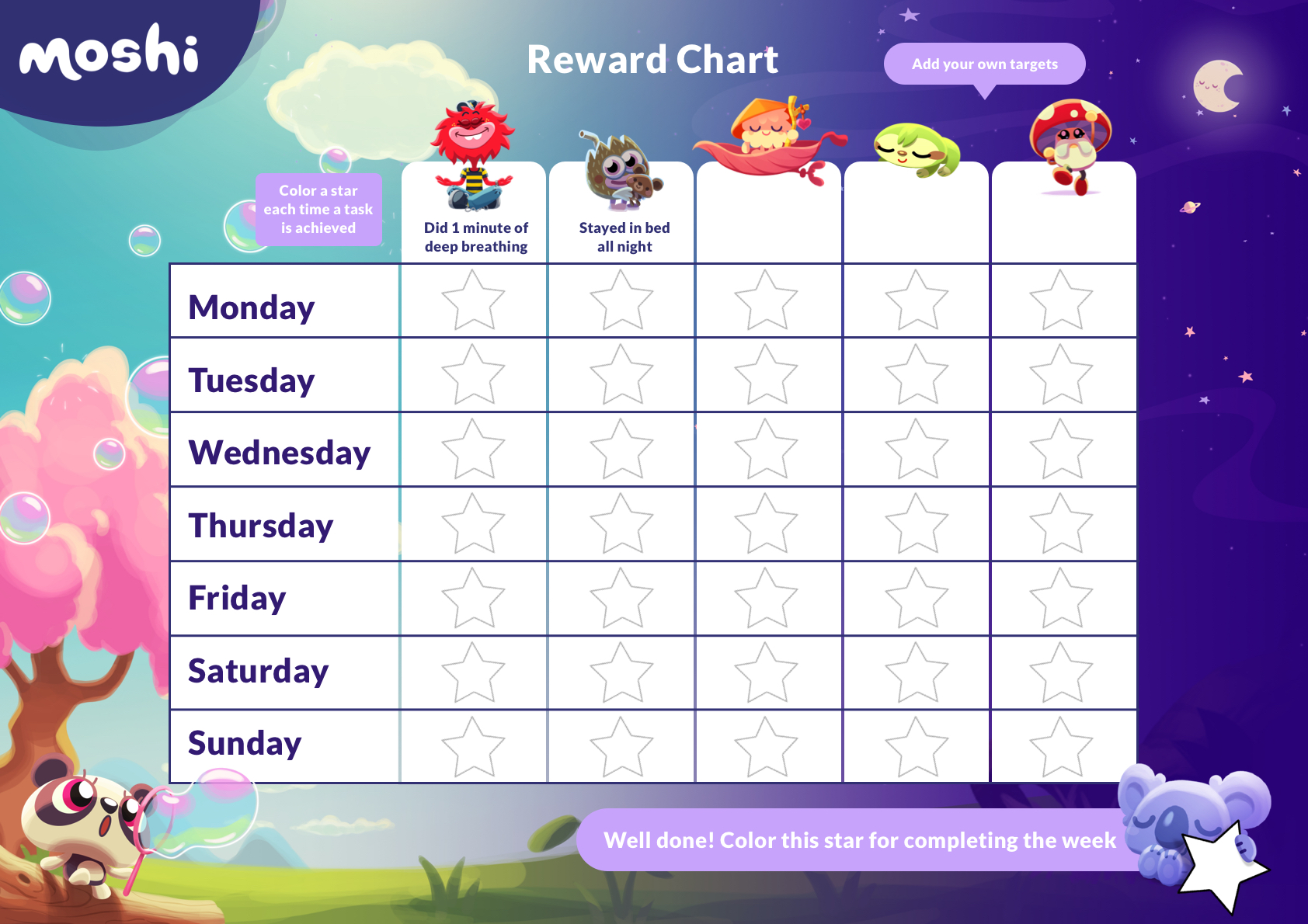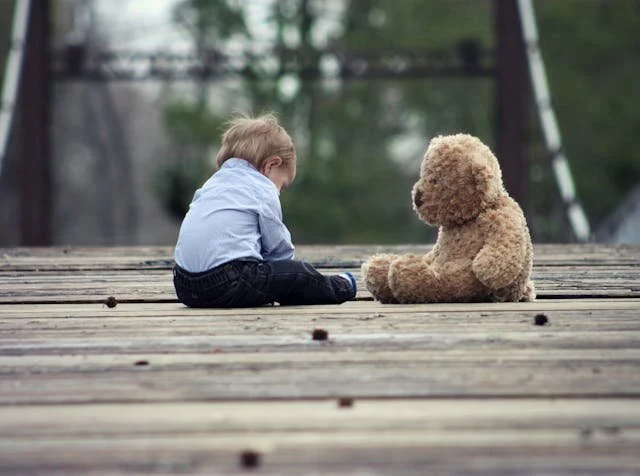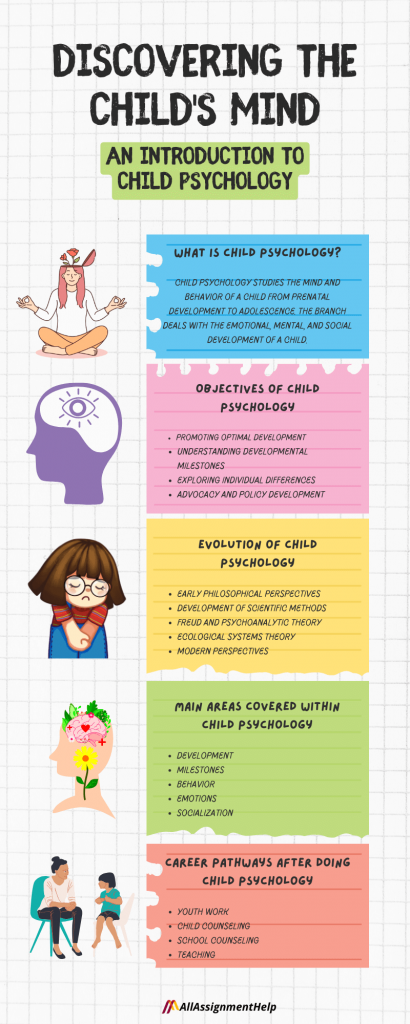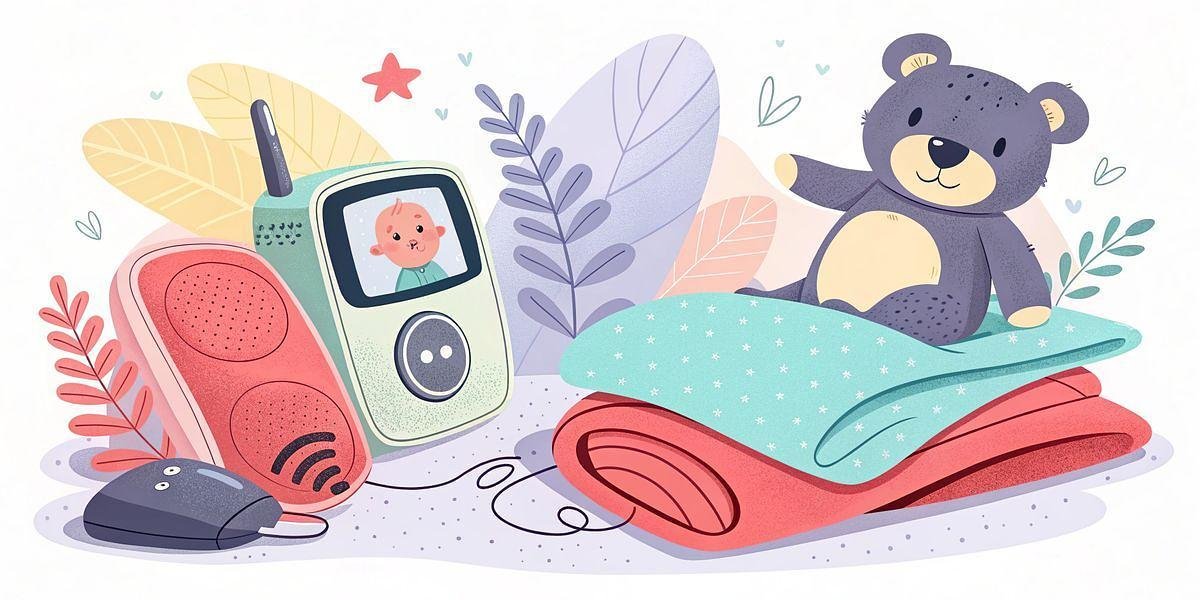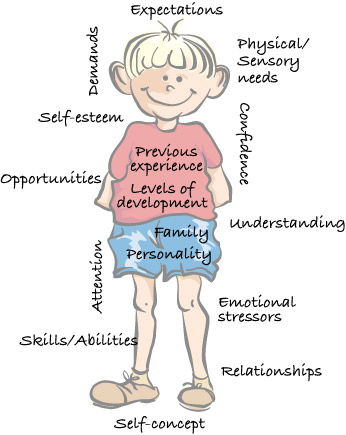Last updated: October 6, 2025
Have you ever found yourself pushing an empty stroller while carrying your baby, wondering why they just won’t settle? If the resistance, cries, and refusal to sit quietly sound familiar, you’re not alone.
Many parents face this puzzling issue. The good news: once you understand the likely reasons, small, safe changes can transform stroller struggles into peaceful outings.
If you’re eager to learn why your baby resists the stroller and how to fix it, keep reading. Your baby stroller saga is about to take a turn for the better.
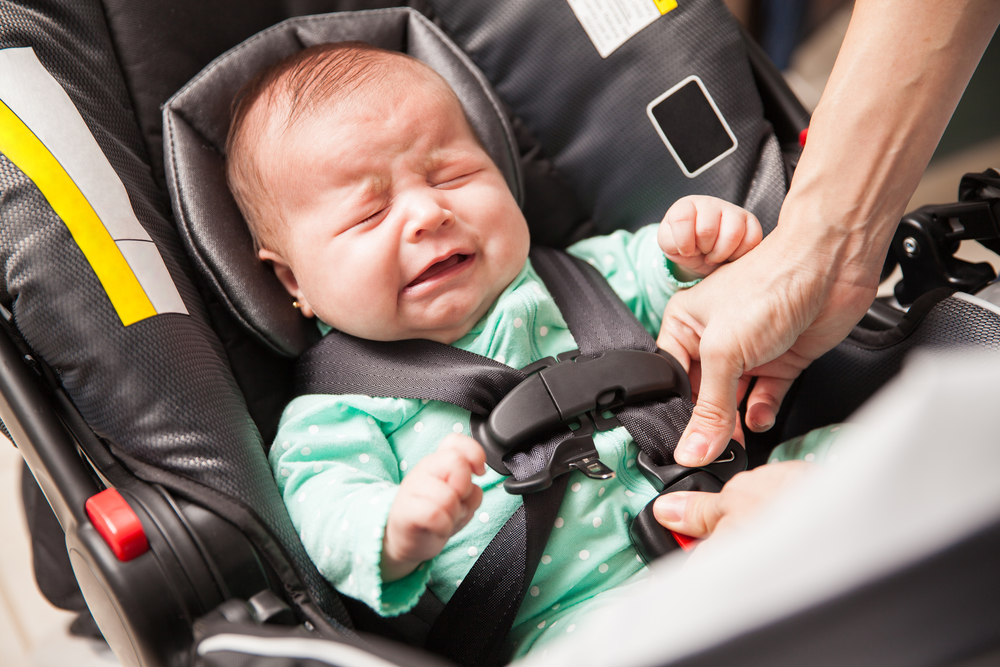
Common Dislikes in Babies
Each baby is unique, but certain parts of stroller time commonly trigger discomfort or frustration.
Too Restrictive
Babies like to move. Feeling confined can be upsetting, but safety comes first. Use the stroller’s 5-point harness every ride and adjust it so it’s snug but comfortable—not loose. Don’t hang bags on the handlebar (tipping risk).2
If your baby squirms and struggles, try short, calm practice sits at home, a parent-facing setup, or brief stops for cuddles—while keeping the harness properly fitted.2
Unfamiliar Surroundings
New sights and sounds can overwhelm. Start with short walks in quieter areas and build up gradually. Narrate what you see; your voice helps regulate your baby’s emotions.
Temperature Sensitivity
Too hot or too cold can make stroller rides miserable. In warm weather, do not drape blankets or muslins over the stroller; this traps heat and reduces airflow. Use a canopy, parasol, or ventilated sunshade instead, and check your baby often.3, 4
Discomfort & Padding
Seat feel matters, but avoid aftermarket pillows or padding not approved by the stroller maker—they can affect harness fit and increase overheating/entrapment risks. Use only manufacturer-provided inserts and follow the manual.5, 11
Lack of Entertainment
Offer a couple of clipped-on toys (secured per instructions) or sing/talk as you stroll. Remove dangling toys once your baby can sit or push up.2
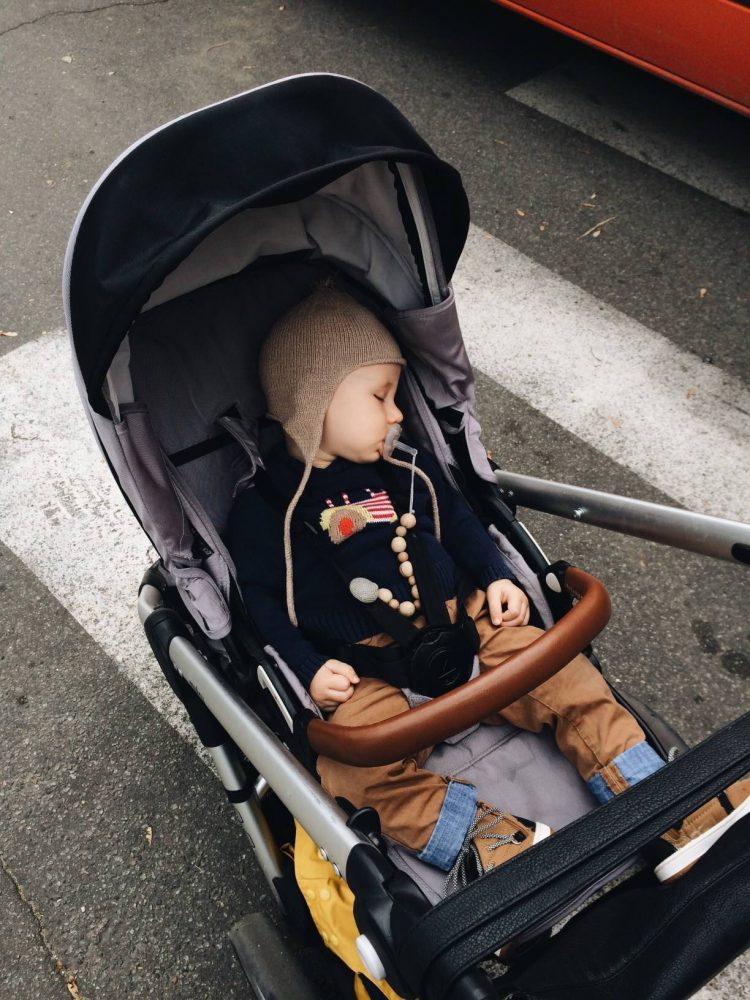
Stroller Comfort Issues
Comfort helps babies relax—but it must never compromise safety.
Seat Padding
Choose a stroller with supportive, breathable materials. If extra support is needed, use only the manufacturer’s approved liners or infant inserts; avoid plush add-ons that weren’t made for your model.5, 11
Strap Tightness
Harnesses keep babies secure. Adjust for a snug fit (flat finger under strap), with the crotch/between-legs strap properly positioned. Always buckle up before moving—even for “just a minute.”2, 11
Temperature Control
Pick breathable fabrics and ventilated canopies. In hot weather, use shade and airflow (never full covers), offer fluids as appropriate, and avoid peak sun.3, 4
Reclining Positions
Young infants who can’t sit independently need a near-flat recline or bassinet stroller attachment; follow age/weight limits in your manual. Many babies tolerate the stroller seat better once they can sit with good head and trunk control (often around the middle of the first year; development varies).12, 8, 9
Shock Absorption
Good suspension and appropriate tires smooth bumps and reduce jostling—especially helpful on rough paths.
Sensory Overload Factors
Bright lights, traffic noise, or crowds can overwhelm babies. Try shaded routes, quieter streets, and slower pacing. A parent-facing seat or peek-a-boo window can also reassure your baby. (Which way should baby face?)
Bright Lights & Constant Motion
Use a canopy/hat to reduce glare and choose smoother paths. If your baby seems motion-sensitive, take breaks; motion sensitivity and motion sickness are common in childhood.10
Unfamiliar Sounds
Car horns, barking dogs, or construction noises can startle. Pause, cuddle, and reassure; consider short outings at quieter times of day.
Temperature Changes
Dress in layers so you can adjust quickly. Keep airflow; avoid covering the stroller fully with cloths or blankets.3, 4
Visual Overload
Busy environments can be a lot to process. Start with short trips and increase gradually. Facing your baby toward you or using a light sunshade can reduce stimuli if needed.
Impact of Developmental Stages
As babies grow, they seek independence and interaction with their world. These normal phases can influence stroller tolerance.
Development of Independence
Exploratory urges rise over the first year. Straps can feel restrictive, so offer short breaks to play or be held—then try again.
Curiosity About the World
Let your baby look, reach, and interact safely. A couple of secured toys or a stop to watch leaves and birds can help.
Physical Growth & Discomfort
Growth spurts can change fit. Re-adjust harness height/length and recline. Many babies handle the stroller seat better once they have steady head/trunk control—development varies and should follow milestones, not just age.8, 9
Emotional Development & Attachment
Some babies prefer being held close. Consider occasional babywearing and follow the T.I.C.K.S. safety checklist (Tight, In view, Close enough to kiss, Keep chin off chest, Supported back).9, 13
Awareness of Environment
As awareness increases, your baby may feel exposed. Parent-facing rides, a familiar blanket (kept away from the face) or gentle narration can soothe.
Parental Influence & Anxiety
Babies often mirror caregiver emotions. A calm, confident approach and predictable routine can make stroller time easier.
Understand Your Own Feelings
If you’re nervous about crowds, traffic, or safety, practice at quiet times and double-check your stroller setup (harness, brakes, and storage in the under-basket—not on the handlebar).2
Model Positive Behavior
Smile, talk, and make stroller time playful. Short, successful rides build confidence for both of you.
Practice Patience
Start with brief trips at home or in the garden and lengthen as your baby adapts.
Addressing Your Anxiety
Talk with other parents or your pediatrician if anxiety persists. Evidence-based reassurance helps everyone.
Create a Routine
Using the stroller at a consistent time (often after a nap/feeding) can help. Consider this daily routine PDF for ideas:
Encouraging Independence
Offer safe independence with a toy to explore or time to people-watch. For babies who prefer being held, consider babywearing with the T.I.C.K.S. checklist.13
Tips for a Positive (and Safe) Stroller Experience
Quick wins you can try today:
Adjust the Stroller for Comfort (Safely)
Set a slight recline if your baby prefers it. Use the approved infant insert for extra support if your model provides one. Re-check harness fit as clothing layers change.2, 5
Introduce Toys & Distractions
Clip on one or two favorite toys and rotate them. Talk, sing, or describe what you see. Remove toys once your child can sit/stand to prevent entanglement.2
Plan Your Route with Care
Pick smooth, shaded paths. In hot weather, avoid peak sun and never cover the stroller with a blanket; use canopies or parasols instead.3, 4
Engage with Your Baby
Make eye contact (parent-facing seats help), narrate the outing, and take breaks for cuddles if needed.
Maintain a Routine
Time your walk for after a nap/feeding. Use the right stroller for the activity (e.g., jogging strollers for running) and follow your manual’s age/weight guidance.12
Do a Safety/Recall Check
Register your stroller to receive safety alerts, and search for recalls before each season. Notable recent recalls include Guava Roam (2024) and Stokke YOYO³ (2024); follow the official remedy steps if affected.2, 6, 7

Frequently Asked Questions
Why do babies dislike strollers?
Common reasons include discomfort (fit/recline), heat/bright light, sensory overload, or a desire to be held. Ensure a snug 5-point harness, appropriate recline for age, shade/airflow, and short, calm practice rides.2, 3
How can I make stroller rides enjoyable?
Check comfort and safety first, then add engagement: brief trips, secured toys, and caregiver chatter. Keep airflow (no full covers) and time outings for when your baby is rested/fed.2, 4
Important: Strollers aren’t for routine sleep. If your baby dozes off, supervise closely and transfer to a firm, flat sleep surface as soon as practical.1
Do stroller designs affect comfort and safety?
Yes. Look for a 5-point harness, easy-to-use brakes, a wide/stable base, ventilated canopy, and suitable recline. Use only manufacturer-approved accessories and store bags in the under-basket (not on handles) to avoid tipping.2, 5
Can adjustments improve my baby’s experience?
Yes. Dial in recline and harness fit; keep your route smooth/shaded; and check wheels/tires regularly. Avoid full covers in heat. Register your stroller and check for recalls each season.2, 3, 6, 7
Conclusion
Understanding the “why” behind stroller resistance helps you make targeted, safe changes—better fit, better airflow, age-appropriate recline, and calmer routes. Keep observing your baby’s cues, follow your stroller’s manual, and use the references below to guide safer, happier outings.
References
- American Academy of Pediatrics. Safe Sleep (updated 2025-07-07): Avoid sleep in seating devices like car seats and strollers (except during travel); transfer to a firm, flat surface. aap.org/en/patient-care/safe-sleep/ :contentReference[oaicite:0]{index=0}
- HealthyChildren.org (AAP). How to Choose a Safe Baby Stroller (updated 2022-08-11): 5-point harness, brakes, wide base, don’t hang bags from handles, toy safety. healthychildren.org :contentReference[oaicite:1]{index=1}
- NHS. Keeping your baby safe in the sun (reviewed 2024-09-27): Don’t cover prams with blankets; use parasols/sunshades; monitor heat. nhs.uk :contentReference[oaicite:2]{index=2}
- The Lullaby Trust. Hot Weather: Safer Sleep: Avoid covering prams; keep babies cool and visible. lullabytrust.org.uk :contentReference[oaicite:3]{index=3}
- CPSC. Carriages & Strollers Business Guidance (16 CFR Part 1227 / ASTM F833): Standards and safety requirements. cpsc.gov :contentReference[oaicite:4]{index=4}
- CPSC Recall (2024-11). Guava Family Recalls Roam Strollers: brake hazard and remedy. cpsc.gov :contentReference[oaicite:5]{index=5}
- CPSC Recall (2024-11). Stokke Recalls YOYO³ Strollers: parking brake hazard and remedy. cpsc.gov :contentReference[oaicite:6]{index=6}
- CDC. Important Milestones: Your Baby by Six Months + 2025 Milestone Moments booklet: typical head/trunk control progression varies. cdc.gov :contentReference[oaicite:7]{index=7}; Milestone Moments PDF :contentReference[oaicite:8]{index=8}
- WHO. Windows of achievement for gross motor milestones (sitting without support, etc.). who.int :contentReference[oaicite:9]{index=9}
- Seattle Children’s. Motion Sickness (2025). Practical tips for motion sensitivity. seattlechildrens.org :contentReference[oaicite:10]{index=10}; see also AAP HealthyChildren Car Sickness healthychildren.org :contentReference[oaicite:11]{index=11}
- CPSC. Stroller Safety Alert (Publication 5096): consistent harness use; entrapment/tip-over prevention. cpsc.gov :contentReference[oaicite:12]{index=12}
- Consumer Reports. Strollers Buying Guide: recline for newborns, type features and safety considerations. consumerreports.org :contentReference[oaicite:13]{index=13}
- Baby Sling Safety (UK). T.I.C.K.S. Rule for Safe Babywearing (guideline PDF). babyslingsafety.co.uk :contentReference[oaicite:14]{index=14}


